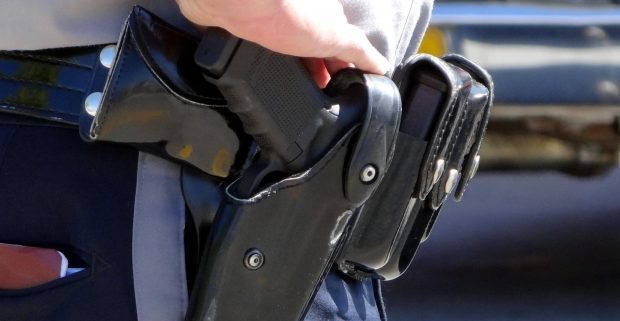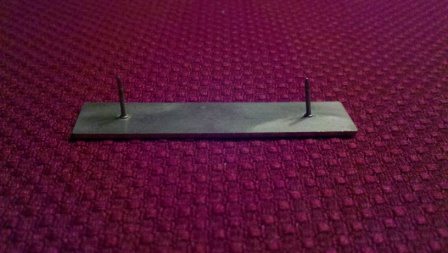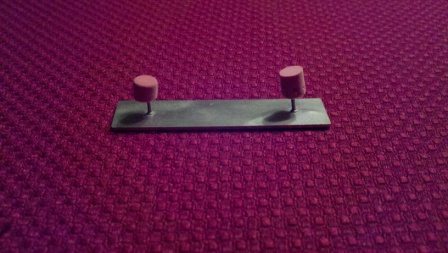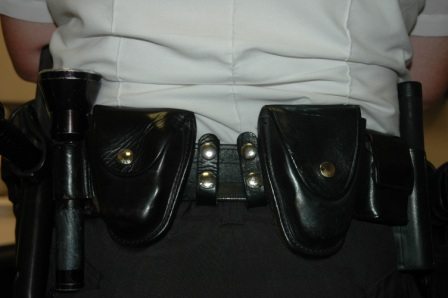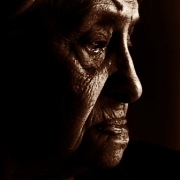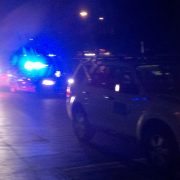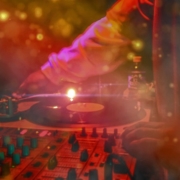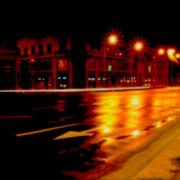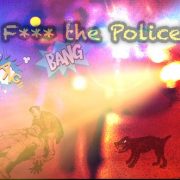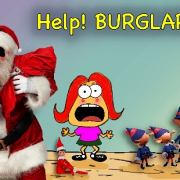Officer, Please Button Your Shirt and Zip Up Your Pants!
Working the graveyard shift was always a thorn in my side, and the reason for the ill will boiled down to the simple fact that I like to sleep when the rest of the humans I know are sleeping. Yes, I too, like to go to bed when the moon is in the sky, when birds are roosting, and when most burglars are out and about plying their trade.
If, by design, man should earn a living at the time when bats are flitting, fluttering, and circling streetlights, well, we’d most certainly have leathery wings and would sit down to plates of steaming hot mosquitos for our evening meals. We’d also have built-in night vision and we’d enjoy long walks in cemeteries. So yeah, in spite of once being a hardcore night person who for many years played guitar in bands that performed in dive bars and clubs across the south, as an officer I had a hard time keeping my eyes open once the clock struck 4 a.m. That particular time, of course, was the precise moment when the sandman began to tug downward on the invisible strings attached to my eyelids.
I prefer to sleep AT NIGHT. Thank you very much.
But, being a person who truly enjoyed receiving a regular paycheck, at 11 p.m. each night of the midnight shift rotation I’d shower and shave and then begin the process of transforming from gardener, cook, dad, husband, neighbor, repairman, mechanic, and carpenter, into the uniformed police officer known to the citizens on my watch. By the way, this metamorphosis must be completed in near silence because your family is fast asleep and already dreaming of unicorns and fairies and happy thoughts of not having to go to work or school in the middle of the night.
So, after a dab of Old Spice to cool sensitive post-shave cheeks came the installation of proper undergarments—boxers, briefs, or whatever bottom-huggers were the preference, if any. This step also included donning a pair of anaconda-strength, calf-crushing socks that’re designed to never slip downward. After all, there are not many things worse than having your socks inch toward your ankles while you’re sprinting through backyards and alleys trying to catch the guy who just robbed the clerk at Billy’s BBQ and Butt-Waxing Emporium.
Also included in the installation of the “unmentionables” was donning a cooling t-shirt. These handy articles of clothing are designed to wick moisture, ward off humidity, and reduce the beneath-the-Kevlar temperature to a manageable degree instead of the typical “bake-a-loaf-of-bread-in-under-two-seconds” heat every officer endures on a daily basis, especially the men and women who work in areas of extreme humidity.
The type of trousers officers wear depends upon their assignment and/or department policy. For now, let’s put our feet, legs, and rear end into a pair of those fancy polyether pants, the ones with the sporty racing stripes that stretch from waist to ankle on the outside of each leg. This odd-feeling material is as slick as eel snot when the eel is suffering from a bad summer cold.
Once the pants are on it’s best to leave them unfastened until tucking the front and rear tails of the vest carrier (the material that holds the Kevlar panels in place) into the trousers. I knew several officers who also tucked the tails of their undershirts into their underwear to prevent the loose material from riding up and going all wonky beneath the vest. A dress belt is slipped through each of the pant loops (more on this belt in a moment).
After the pants are in place it’s time for the shiny shoes, which, by the way, are fabricated from some sort of space-age stay-shiny-all-the-time material. The days of shoe-shining, thankfully, went out with the round red bubblegum lights perched on the tops of patrol cars. Although, I sort of missed shining my own shoes because the scent of shoe polish was comforting, much like the cooking smells at grandma’s house on Thanksgiving Day.
I say now is the time to put on the shoes because it’s far easier to do so BEFORE hitching-up the Kevlar vest, a contraption that hinders bending, squatting, taking deep breaths, and scratching those pesky itches that always occur the moment after the vest is strapped in place.
This thing, “the vest,” a life-saving piece of gear for sure, is like strapping two chunks of dense clay to your chest and back. You slip the bulky thing over your head, taking care to not whack yourself in the noggin, a blow that could induce instantaneous unconsciousness. Heaven forbid you should wake the rest of the family when your body hits the floor, right? Anyway, a quick pull on the velcro straps while mashing the hooks and loops together, and then you’re ready to reach for the shirt.
The uniform shirt is a billboard of sorts that, by way of various pins, medals, and badges, advertises an officer’s rank, length of time in service, conduct status, how well they shoot, and even their name in case a rock-tossing “I know my rights” protester for the cause du jour wants to include it in the latest social media video. It helps to attach all of the doodads in advance because it’s a bit tedious and time-consuming.
There’s a place on the shirt that’s designed specifically for the badge. It’s easy to spot due to the two permanently sewn-in tabs that help prevent excessive wear and tear on the material caused by daily pinning and unpinning.
The shirts also feature permanent sewn-in military creases, stiff collar stays, and a slick, stain-resistant finish for repelling blood, grime, and other “goop” that could find it’s way onto the material during a scuffle or bad burrito spill.
Some uniform shirts are also fitted with zip-up fronts. If so, the zippers are covered by a thin strip of vertical material and row of buttons that serve no purpose other than to give the appearance that they’re used to button-up the shirt. Zippered shirts are great because bad guys cannot rip and pop the buttons during a friendly “encounter.”
Here’s an example of some do-dads worn by officers.
From top to bottom:
– Name tag.
– Award ribbons – Community service award, length of service, expert marksman, lifesaving award, medal of valor.
– Pistol expert (in our area, to earn this award the officer must consistently shoot an average of 95% or better on the range).
– FTO pin worn by field training officers.
– K9 pin worn by K9 officers
*Remember, ribbons and pins may vary in individual departments and agencies.
Pins on the back of name tags, ribbons, etc. are used to attach the insignias to an officer’s uniform. A small clasp (similar to an ear ring backing) is pressed over the pin tips to hold them in place.
Unfortunately, the clasps often fall off during scuffles with rowdy bad guys, and (if the officer is not wearing a bullet-resistant vest) can result in the pin tips puncturing the officer’s skin.
For a quick fix in the field, lost clasps can be temporarily replaced with pencil erasers.
So, with all articles of the uniform in place, officers are finally in position to tuck the tails of the vest carrier into the pants, button up, zip up, close up, buckle the dress belt, and then add the final piece to the puzzle … the gun belt.
Gun belts wrap around the waist, hook in the front, and are attached to the dress belt to hold it in place. Belt keepers are are used to connect the gun belt to the dress belt. Their purpose is to prevent the gun belt from falling down around the ankles, an act that could cause a bit of embarrassment, and to make drawing the weapon an extremely difficult task to perform.
Two belt keepers, between the two handcuff cases, loop over both the gun belt and the dress belt. They’re held together by the two pairs of silver snaps pictured here. Some keepers have only one snap. Belt keepers are worn in various locations around the belt. Specific placement and the number of keepers used is up to the officer and depends upon where support is needed.
So, once the graveyard shift officer is properly attired and outfitted, it’s time to tiptoe out the front door, taking care to not wake anyone. However, leather creaks, keys jingle, shoes squeak, and the radio crackles.
Hopefully, somewhere between eight and twelve hours later the sweaty and exhausted officer, the one wearing the now wrinkled and rumpled uniform, will return home where he/she will begin the process in reverse … and then try to sleep when the sun is high in the sky, streetlights are off, and while the rest of the family is banging and clanging around the house, the TV is blaring, the neighbor is mowing his lawn, a mockingbird is singing its ass off in the tree next to the bedroom window, and the dog is licking their face.
Oh, and let’s not forget trying to drift off to sleep while thoughts of auto crashes, shooting and stabbing victims, pursuits, fights, and battered kids and women all are flashing through their minds.
Yeah, sweet dreams, officer. Sweet dreams …

